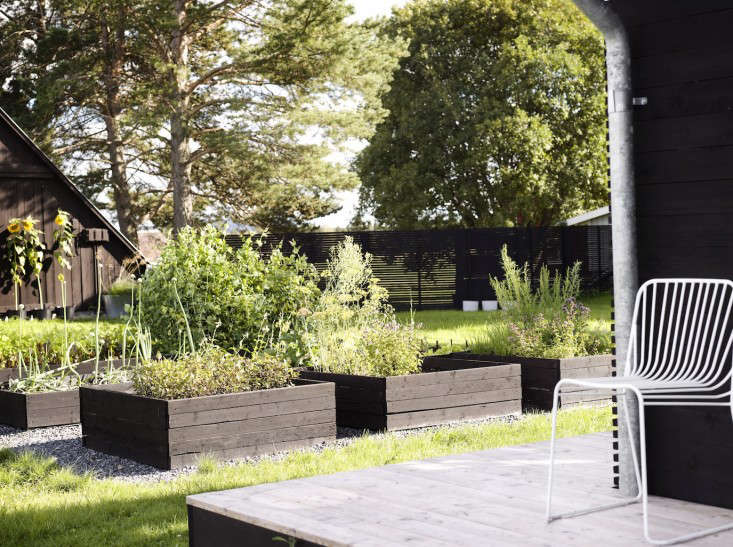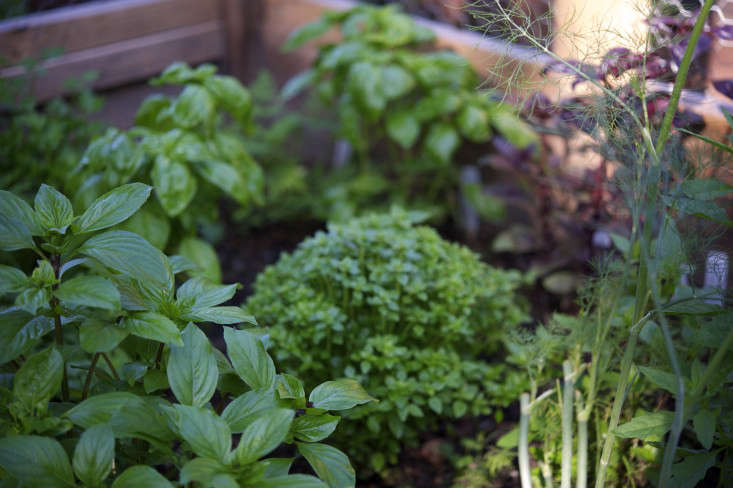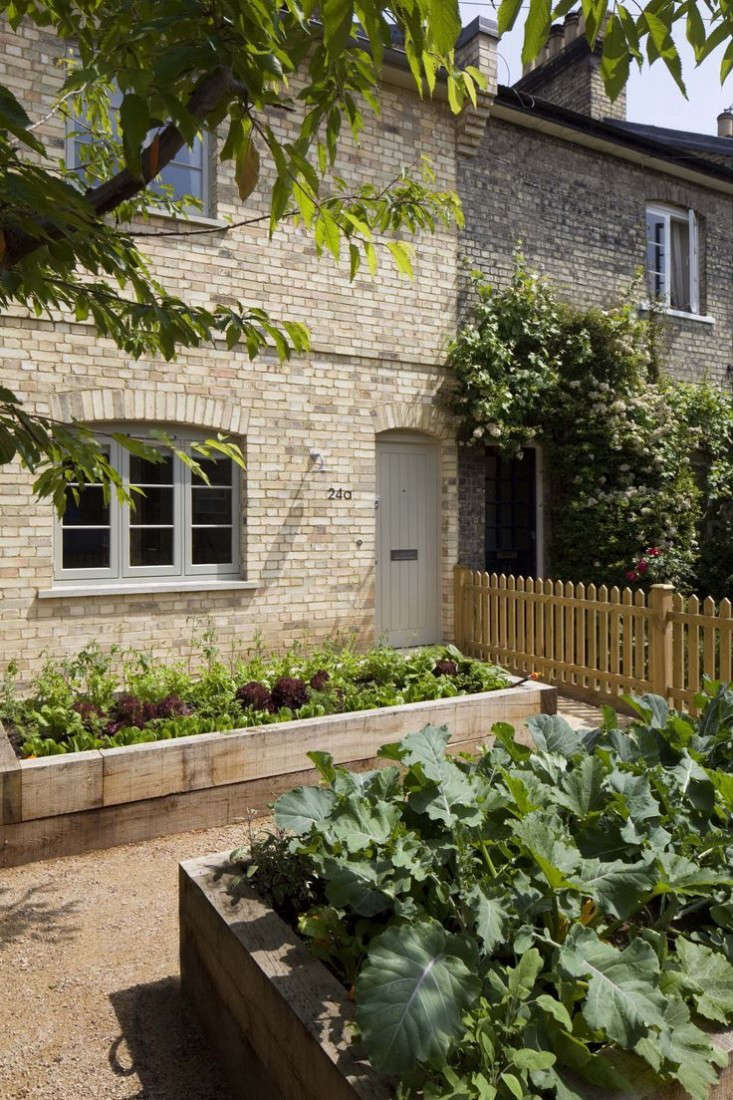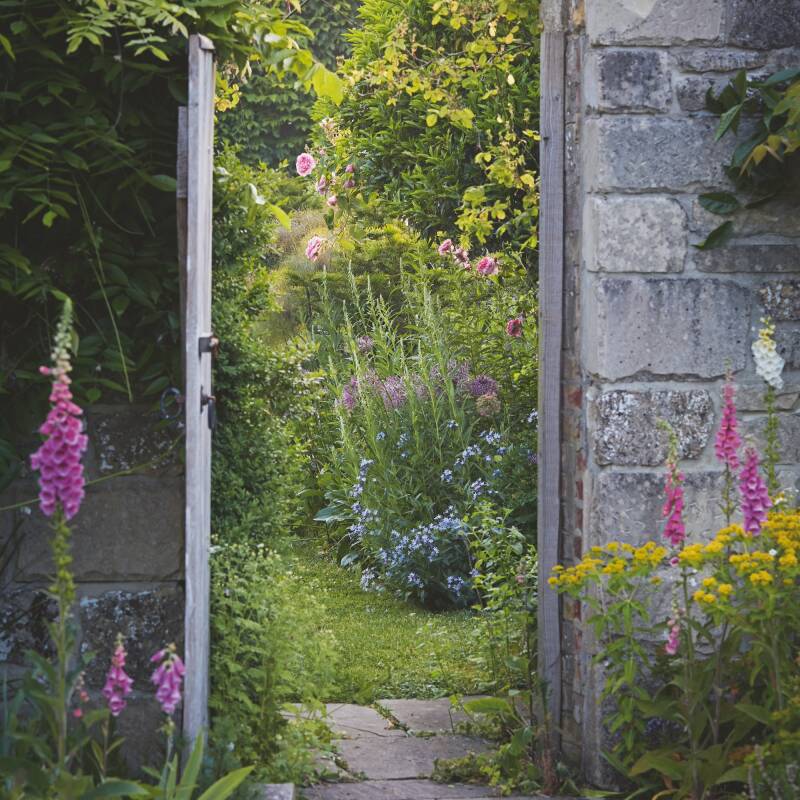Don’t let bad soil stop you from planting an edible garden. The solution? Raised garden beds. An effective and easy solution for less-than-ideal soil conditions, raised beds increase yield and reduce the work. It’s no wonder raised garden beds are the kitchen gardener’s secret weapon.
Are raised beds the right solution for your edible garden? Read on for everything you need to know:

What are the benefits of raised garden beds?
- Instant soil improvement. Faced with clay-ridden soil or other less than-ideal conditions? Rather than spending many seasons trying to amend your soil, you can create a near-perfect growing environment instantly with raised beds. Place the bed right on top of the ground and fill the frame with a nutrient-rich soil blend. With loose and accessible soil, it is easy to maintain good growing conditions.
- Higher yields. Many gardeners say raised garden beds produce up to two times as much as ground beds. Why? Plants grow better in loose, rich soil in which roots penetrate easily. Good aeration and drainage are additional benefits. Raised beds prevent soil compaction and keep nutrient-rich soil amendments in place, concentrated on the plants they are meant to feed. This also enables dense planting, giving rise to more plants in a smaller area than in ground beds.
- Longer growing season. When soil is above ground it stays warmer and better drained. Add a cold frame and extend the growing season even more (see Hardscaping 101: Cold Frames).

- Space efficiency. A great choice for the urban farmer, most raised beds are from 3 to 4 feet wide, good for small spaces and a size that enables you to reach plants without stepping in. Also, because the gardener works from adjacent paths, all the space in the bed can be devoted to planting.
- Plant protection. Your plants are safe from the threat of wayward feet of people and pets.
- Pest barrier. Raised beds offer a strong defense against plant-eating pests such as slugs and snails. Tall sides thwart non-burrowing critters, and weed barriers can be placed underneath to keep burrowing, root-eating pests at bay.
- Fewer weeds. In densely planted beds, weeds have little room to grow. It is also common to place cardboard as a weed barrier under a bed. And, if weeds do sneak into the raised bed neighborhood, the loose soil makes it easy to remove them.
- Accessibility. Gardening above ground minimizes bending and, potentially, gardener’s backaches. The bed’s sides can be designed so you can sit on them while maintaining and harvesting crops.
- Aesthetics. An added architectural element, raised beds add an appealing geometry to a garden. They can be used to create symmetry, boundaries, and focal points.

Is there an ideal size for a raised bed?
Several factors dictate size, including soil conditions, space limitations, and considerations of physical comfort.
- Length and Width. When figuring the dimensions of the raised bed frame, first consider a garden’s space constraints (don’t forget to leave room to walk around the bed). Second, assess your reach. It is vital to be able to reach the center of the bed from either side to avoid stepping on the bed, which compresses the soil. For most people, this means limiting the width to about 4 feet. If your bed is only accessible from one side, limit the width to a maximum of 3 feet. Length is limited only by the size of your garden and by building materials.
- Height. Most raised beds range from 6 to 12 inches, with some as high as 36 inches. In general, the worse the underlying soil, the deeper you will want a bed to maximize the amount of good soil available to plants. And, more depth means more room for roots to grow. Deeper beds hold more soil and, thus, more moisture, reducing watering needs. Remember that the taller the sides, the more pressure the weight of the soil places on them. You may need to compensate with thicker wood or cross supports to prevent the wood from bowing.

For more of Art’s kitchen garden tips, see Ask the Expert: How to Create a Beautiful Edible Garden.
What is the best material for raised beds?
Raised beds are traditionally made using naturally rot-resistant cedar. But, honestly you can build the bed wall with almost any material that will contain the soil, including stone, woven willow, and concrete. For vegetable and herb gardens it is important to avoid using pressure-treated lumber, which can leach heavy metals into the soil. Untreated, naturally rot-resistant lumber is the gold standard of building materials.

We admire stained and painted raised beds in gardens, such as Swedish designer and entrepreneur Agneta Enzell’s black raised beds. Be sure to use eco-friendly stains and paints that are safe to use on edible beds (consider pine tar.)

Can I make my own raised garden beds?
A raised garden bed is an easy DIY project. Essentially you build a bottomless box. Google “DIY raised garden bed” and you can choose from among dozens of projects. One of our favorites is: Martha Stewart’s How to Build a Raised Garden Bed.

Raised Garden Bed Tips:
- To prevent compaction, don’t step or lean on the soil in your raised bed.
- The best plants to grow in raised beds are those with shallow roots: vegetables, herbs, annual and perennial flowers, berry bushes, and even small shrubs.

- To calculate how much soil you will need for your bed, consider that a 10-inch-deep, 3-by-6-foot bed needs 15 cubic feet of soil.
- Revitalize your soil regularly with compost and soil amendments to preserve vitality. Crops will take up all the nutrients during a season or two. Planting cover crops and green manures when the bed is not in use also helps keep the soil fertile.
- Plant with close spacing over the entire surface. This creates a leafy canopy to shade the bed, moderating soil temperature and conserving moisture. It also minimizes space for weeds to grow.

- Choose a site for your raised beds with maximum sun exposure. If you have a choice, try orienting the long side facing south to ensure that the plants in the bed get equal amounts of sunlight.
- In larger gardens, when using multiple raised beds, pay attention to spacing. If you use a wheelbarrow, be sure to make the paths between beds wide enough. Same goes for lawn mowers.
- Consider spreading gravel, crushed shells, or wood chips over the paths between your raised garden beds and you won’t track in dirt and mud after working or harvesting your beds.

See also:
- Raised Bed, Container, or In-Ground? How to Choose the Right Type of Garden for Your Space
- Everything You Need to Know About Edible Gardens
- Vego Garden’s Raised Beds and Planters Are Stylish, Sustainable, and Safe for Growing Veggies
N.B.: This post has been updated with new photos and links. It was first published January 2015.












Have a Question or Comment About This Post?
Join the conversation (3)